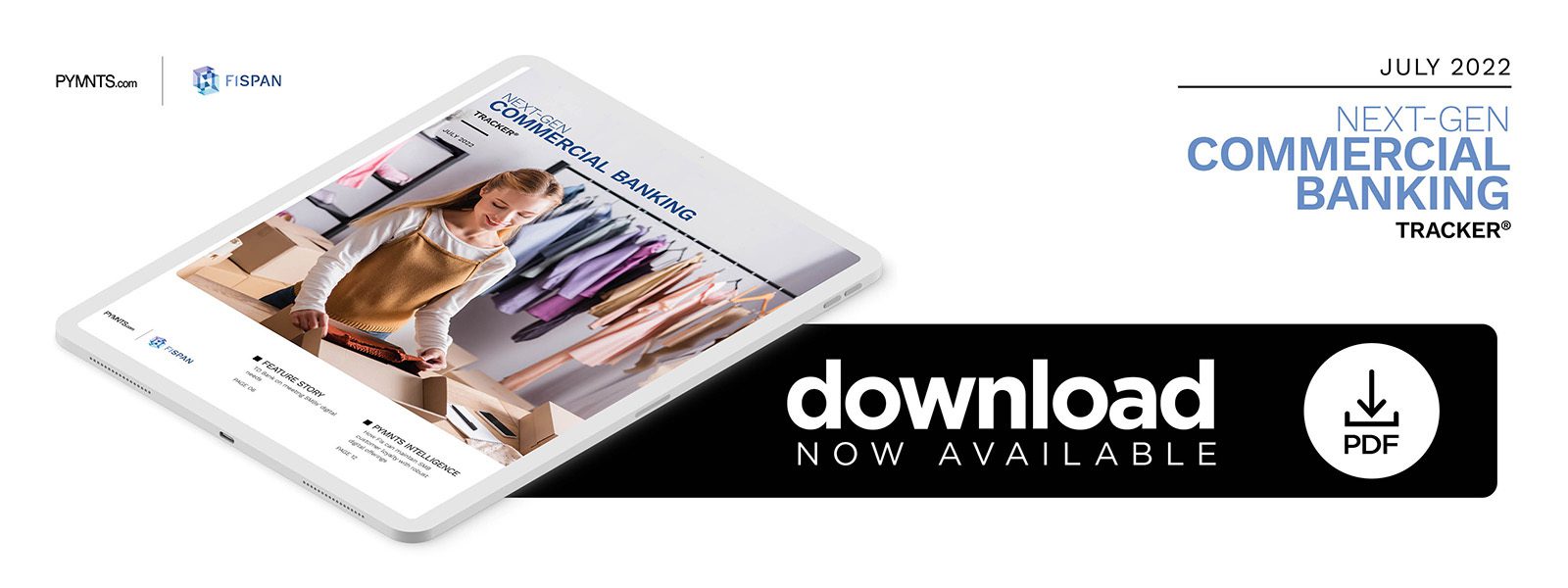TD Bank on Meeting SMBs’ Digital Needs

In “The Next-Gen Commercial Banking Tracker®,” TD Bank’s Paul Margarites tells PYMNTS how banks offer SMBs post-COVID upgrades like real-time payments and cash management solutions as a way to turn short-term survival into long-term loyalty.
Small- to medium-sized businesses (SMBs) had been gradually embracing digital solutions for years. Then the pandemic hit.
A world of closed stores, shuttered offices and remote workforces forced many SMBs to adopt digital solutions to keep operating. Digital tools became indispensable, and they remain so even as pandemic-related disruptions abate.
Running and growing a business is challenging in the best of times, and the pandemic has only added to the difficulty. Business owners are looking for tools and services to improve efficiency, raise productivity and guide decision-making to overcome these challenges.
“SMBs expect their financial institutions (FIs) to make it easy to pay and get paid in convenient ways for their customers,” Paul Margarites, head of commercial digital platforms at TD Bank, told PYMNTS in an interview.
Margarites explained that SMBs expect — and need — financial service providers to offer digital solutions now more than ever. Financial institutions (FIs) seeking to strengthen relationships with SMB clients and attract new customers must meet the rising demand for digital solutions. To do so, FIs must understand SMB expectations and needs and identify where FIs are not doing enough to meet them.
What SMBs Expect
Margarites said SMBs today want to send and receive money quickly and securely across multiple payment rails, and FIs not currently supporting a range of digital payment methods — including real-time payment functionality — should explore doing so. Cash management solutions are another critical focus area for SMBs. Businesses are increasingly replacing manual, paper-based cash management processes — known to be slow, inflexible and prone to errors — with more effective digital solutions.
“Treasury teams must operate efficiently to appropriately manage their liquidity and ensure the business can grow,” he said. “To continue to operate effectively, they need tools that will improve automation and reduce the chance of errors.”
The best treasury tools automate parts of the cash cycle while also providing business owners with data and analytics to guide decision-making.
“The context of a client’s current financial position and the ability to move money within that context is critical to our client’s ability to manage their businesses,” Margarites explained.
He noted that business customers now expect FIs to offer treasury solutions that provide this context and aid decision-making.
Integration Is Key
All businesses, regardless of size, want to access digital platforms easily, securely and on their own terms, Margarites said, but the need for connectivity and integration is even greater for SMBs. Smaller firms have limited money to invest in expensive infrastructure projects and often lack the in-house expertise needed to get complex digital systems up and running.
“In speaking with our clients, the theme of integration has been front and center,” he said.
FIs should therefore pay considerable attention to integration when designing products and services. FIs need to realize that an online payment or treasury solution packed with powerful features is not that useful if a company cannot easily integrate it into its workflow. It is important to meet SMBs where they are, he emphasized, and this entails knowing their level of expertise and comfort with online tools, their current business infrastructure and their short- and long-term business objectives.
“The more integrated [they are] into the [Software-as-a-Service (SaaS)] ecosystem and real-time capabilities, the less time small businesses are spending on manual tasks and the more time they have for scaling their businesses,” Margarites said.
Proper integration should allow users to move seamlessly between essential business systems. This means that there is integration between the banking platforms and enterprise resource planning (ERP) systems, as well as integration between the bank and other banking or FinTech platforms, he said. When done correctly, integration results in a frictionless workflow that reduces errors, increases controls and improves efficiency.
Room for Improvement
Although FIs have made many improvements to their digital strategies, there is still work to be done. According to Margarites, while banks are getting better at integrating into client systems, the lack of integration is the biggest shortcoming in FIs’ digital portfolios for business customers.
“The most significant gap I’m seeing is around bringing the full view of the client directly to them, where they want it,” he said. “Clients still don’t have access to the full spectrum of banking products and services as well as their own data to provide them with the key insights and information they need in a single, well-integrated connection to manage their business.”
It is never too late for FIs to address gaps in digital offerings, but they should address them soon, as traditional banks and FIs face stiffer competition than in the past. FinTechs, digital-savvy neobanks and even other FIs are eager to step into this void to meet SMBs’ digital needs. By putting better integrations at the forefront of their digital strategies, FIs can empower SMBs to take real-time actions, improve productivity and reduce reliance on cumbersome legacy tools and processes, Margarites said.
“My recommendation to FIs [is to] focus on bringing the banking experience to SMBs and allowing the context of their financial position to drive their decision-making,” he concluded.

